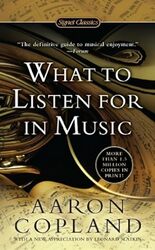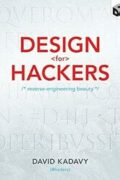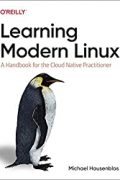
Rating: 7.6/10.
Book about how to appreciate classical music, especially 20th-century modern music, written by influential American classical composer Aaron Copland. It’s written at a level that does not assume much prior understanding of music, even though it makes use of some musical notation. Often, people ask how to understand music, in short, there is often no definite meaning to music associated with a concrete object, instead it is helpful to understand what is going on inside a piece and appreciate it at several different levels, including sound quality, the melody, rhythm, and musical structure.
Rhythms: the most common classical rhythms are 4/4 or 3/4 time, but more modern 19th-century composers tried unusual meters to avoid being boring, such as having bars with different numbers of beats. Polyrhythm is when different parts have rhythm bars that don’t coincide.
Melody: major and minor diatonic scales that form the basis for most western music. However, modern composers push the definition of melodies with concepts such as atonality, which avoids these scales.
Harmony was developed gradually in the Renaissance, starting with parallel melodies and eventually evolving into independent chords. These chords start with one, three, five, and evolved to add on 7th, 9th, etc, and when two chords share tones in common, they feel like they are related. Polytonality is when different parts are in different keys, which may sound like atonality if the listener is inexperienced. Much of modern music is tonally centered, which is a compromise between classic harmony and atonality.
Each instrument has its unique tone color that expresses a different emotion; the composer must be aware of the limitations of each instrument, such as the range, loudness, and which notes are easily playable. When listening, pay attention to all four orchestra sections: strings, woodwind, brass, and percussion, depending on which is important at the time. Homophonic music is a monophonic melody plus a chord, which may be broken up into arpeggios. Polyphony is multiple independent voices, and pay attention to each one separately.
Form of music – form is a structure that is helpful to the composer as a mold to fit into the music, rather than starting from scratch, but is not so strict as the composer is free to deviate from it if he feels like it. There is often some repetition, the ABA form is one of the most common, with the second A having some variation from the original. Many forms, like minuet, nocturne, impromptu, etc, follow the ABA form, but two-part forms are more common in earlier music, and other forms like rondo, which is ABACADA.
Some variation forms include the passacaglia, where the variation gets more complex as the song progresses, and theme and variations, where the simplest form is first, and then different variations vary the melody, rhythm, etc, in complex ways. The fugal form introduces the subject and one voice at a time during the exposition, and then reenters many times before the cadence.
The term “sonata” can mean several different things depending on the context – it can refer to a piece with 3-4 movements; the first movement has the sonata allegro form, and several other movements that are slow or fast provide a mixture of different musical styles, but are not necessarily connected to each other musically. However, what is called the sonata allegro form is used in the first movement of symphonies, sonatas, and concertos. Typically, there are several themes introduced in the exposition, then during the development, the multiple themes interact with each other, but there is a lot of variation in the specifics.
Free form is not necessarily a complete lack of form, but rather it has a structure that is invented freshly for this piece; a complete lack of structure and repetition makes music hard to listen to. Music might have associations to stories, like programmatic music, but it should be self-standing without the knowledge of the story. Throughout musical history, many forms of opera have developed, and each era challenges the naturalness of the previous era’s opera form, although it is often difficult for English-speaking audiences to appreciate passages that tell narratives in other languages.
Many listeners feel disoriented when listening to contemporary classical music, but this category ranges widely from easy to difficult. When it sounds dissonant, it is helpful to develop knowledge of the modern musical vocabulary, which is more varied than previous eras. Additionally, it is useful to try to understand what the composer is intending to accomplish, as many times the formal structure is not evident when casually listening to the music. The epilogue notes that several styles of contemporary classical music, pushing the boundaries of tonality and experimenting with minimalism, such as John Cage’s 4’33 of silence and Ligeti’s electronic instruments used in unusual ways, leave it ambiguous to the reader whether this type of music requires more attention and knowledge to appreciate, or it is just not very good.
Film music is generally made after the filming is done: the composer watches the film and decides which parts need music and for how long. Film music can drastically change the emotion and atmosphere for a scene, or it can also serve as background filler in which case the music should not be distracting. The director gives the composer a cue sheet of all the timings of events that happen, so the composer does not need to watch the film again. Due to the editing process, it is possible to record unusual combinations of instruments that are not possible in a concert hall. After recording, the composer will likely never hear the piece again in the concert hall, as it will be mixed with other sounds and dialogue when the film is released.



